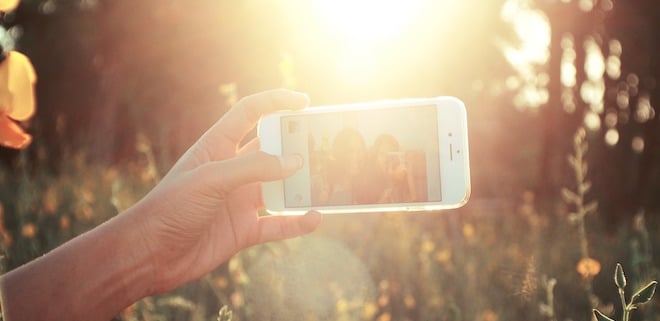For the last couple of months, I’ve been trying to “get” Snapchat. I think I’m almost there, and that’s a story for another day. As I was doing some of my daily reading, I came across an article that both resonated with what I’m seeing and made me wonder about the future of my craft, “The Information Age is over; welcome to the Experience Age.”
The TL;DR of it is that the reason Snapchat is more popular with the group of people between my 40-something and my son’s friends in their early teens is that it’s more about an experience than building a “wall.” The quick posts are meant to be a conversation, and interaction is either through direct contact (responding in the chat feature) or simply by viewing a snap. If it’s something posted directly, not to a story, a second viewing is supposed to be a major compliment.
On Facebook, you get reminders of things that happened years ago. On Instagram, there are companies that will print out all of your pics to create a book. Although I first created my husband’s Facebook account so he could see what I was doing on a long distance charity bike ride without having to BE on the ride, for many people that still seems to feel like a digital record. Not as much bringing him along for the ride.
So what does that mean for the modern story teller?
I believe that it gives us one more rich tool in our storytelling kit, and that the STORY becomes more important than ever. Sure, a lot of time on Snapchat is about tapping through to get to the next thing, but to REALLY capture an audience, it takes a story. The best example I’ve seen is the story of “Mystery Girl” meeting “Vikings Fan” after reaching out on their University of Wisconsin Snapchat story. The whole campus got involved, and cheered them on as a break from finals. It truly became an experience.
But if you don’t happen to meet someone and get a crowd involved, how do you share more than drunken rants or filtered selfies? By telling a story.
If the idea of the “Experience Age” is to bring people along, how do those people even know where to participate without digital sign posts? It may feel like anyone can be a citizen journalist, and it’s true that anyone with a camera (phone) or a keyboard can share what they see. But how to you know who to trust? We may have cameras everywhere, but celebrity selfies have proven that Photoshop can make a huge difference in what we think is a candid shot.
This is why it’s important to have someone on your team who can help tell a coherent story, and craft your message in a way that your audience can understand. It used to be that you had the 30-second “elevator pitch” to get your point of view across. Now we have ten second video snaps, 140 characters, or a few frames of pictures.
What do you think? Is it more or less important to get help crafting a story with the available of digital tools? Or do you think the “Experience Age” is even a thing? No matter how the next several years unfold, I for one, am looking forward to finding out.

